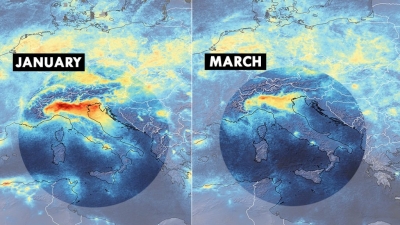
The COVID-19 pandemic is easily the most defining aspect of 2020, altering lives and reshaping livelihoods globally. However, one of the few positive chapters in the COVID story is how the pandemic-induced lockdown showed us an improving environment the world over. According to a study published recently, as all types of “social, economic, industrial and urbanization activity suddenly shut off”, improvement in the quality of air, cleaner rivers, less noise pollution and undisturbed wildlife became evident. For instance, water from the Ganges at Haridwar and Rishikesh saw a “500% decrease in sewage and industrial effluents” after lockdown. Also, an IFS officer shared on social media that the Himalayas’ Dhauladhar mountain range in Himachal Pradesh – 200 km away – was seen after 30 years, from Jalandhar (Punjab) “after pollution drops to the lowest level in 30 years”. According to the Copernicus Atmosphere Monitoring Service of the European Union, a drop of approximately 20 to 30% of PM (particulate matter) 2.5 was observed in large parts of China in February. Meanwhile, there were many instances of animals and birds freely taking over space occupied hitherto by humans and human activity – think nilgai on Indian roads! And happily, with fever noisy vehicles on the road, sonorous bird calls became a lot more audible. But, this does not mean we can be complacent. The lockdown was only a pointer to how wonderfully our planet responds when we treat it gently.
The lockdown saw a spike not just in good air quality but also in rumours and “wild” imagination! Amidst (false) news of dolphins swimming merrily in Venetian canals, information about a critically endangered Malabar civet spotted in India for the first time since the 1990s was widely shared on social media. However, the creature sauntering on a Kerala road junction turned out to be its cousin, the small Indian civet – neither rare nor as endangered!
Picture Credit : Google

